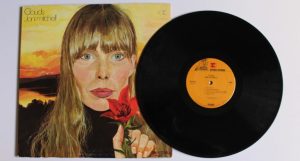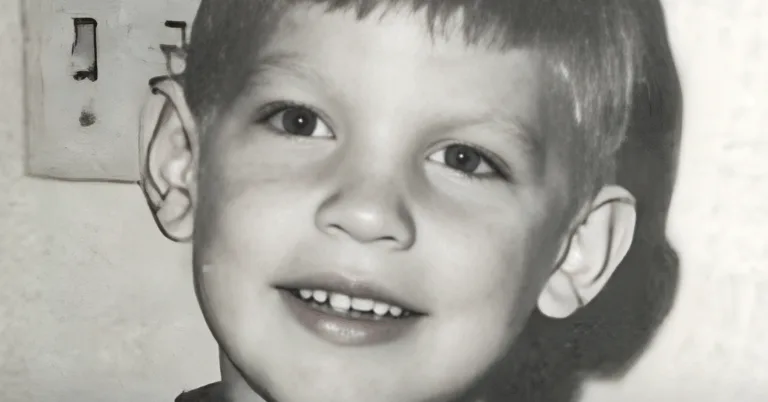Joni Mitchell rose to fame in the 1960s and 1970s with her debut album and iconic songs like “Both Sides Now” and “Big Yellow Taxi.” She made the difficult decision to give her daughter up for adoption in 1965 due to financial instability. In recent years, she has faced health challenges, describing a mysterious ailment. In 2022, at the age of 79, she made a rare public appearance. Mitchell’s influence on music is undeniable, and her personal life and health struggles have added to her complex legacy as a legendary artist.

Born as Roberta Joan Anderson on November 7, 1943, in Fort McCloud, Alberta, Joni Mitchell was the only child of Myrtle and Bill Anderson. Her early life hinted at her future in music.
Joni Mitchell’s early life was challenging. She contracted polio at age nine, leaving her in a wheelchair. Despite initial setbacks when she sang for other hospitalized children, she faced a resurgence of health issues later in life, comparing them to multiple sclerosis. Her family moved through various towns in Saskatchewan, and her mother, Myrtle, encouraged her musical pursuits, influenced by her father’s involvement with marching bands. Although Joni had piano lessons, her passion initially leaned toward painting, and she later attended art college.

Joni Mitchell frequented a coffeehouse to listen to jazz, even though she considered herself a “rock and roller” who didn’t particularly enjoy jazz. However, one night, she discovered a band that piqued her interest. She asked the singer to teach her guitar, but he declined. So, Joni decided to learn on her own. She bought a ukulele since her mother associated guitars with country music. She practiced through the summer and later played in a club during her time at art college. She teamed up with Peter Abling, performing in various Canadian cities and at folk festivals, ultimately making music a significant part of her life.

Shortly afterward, Joni met Chuck Mitchell, and the two fell in love. They relocated to Detroit, Michigan, where they formed a musical duo. In 1965, they got married, and Joni adopted his last name. Their marriage, however, ended in divorce after just two years, but she retained the surname.
During that period, Joni gave birth to a daughter but made the difficult choice to give her up for adoption, a decision that deeply affected her and served as inspiration for her beloved song, “Both Sides, Now.” Reflecting on this part of her life, Joni shared with NPR that she had to give up her daughter to provide her with a better future. She initially married someone to try to keep her, but soon realized it was not the right home for her child. Her daughter, Kilauren Gibb, and Joni reunited in 1997, and Joni expressed the profound emotions she experienced, saying, “I’ve had pain and joy in my life but nothing like this. It’s an unparalleled emotional feeling.”

In 1968, she launched her legendary album “Joni Mitchell,” also known as “Song to a Seagull,” with David Crosby as the producer. Just a year later, her second album, “Clouds,” featuring the massive hit “Both Sides Now,” catapulted her to even greater fame. The album reached No. 31 on the Billboard Top 200 chart and earned her a Grammy Award for Best Folk Performance. In 1969, she graced the stage at the historic Woodstock Festival in Bethel, New York.

Further success came with the album “Ladies of the Canyon,” featuring hits like “Big Yellow Taxi” and “The Circle Game.” While Joni Mitchell’s earlier work had primarily appealed to folk enthusiasts, she was now gaining popularity among mainstream audiences.
The song “Both Sides, Now” took on a life of its own, with a cover by Judy Collins becoming a major hit. Notably, artists like Neil Diamond and Frank Sinatra also covered the song, and Joni Mitchell was at the peak of her career.
In the 1970s, Los Angeles, specifically Laurel Canyon and Lookout Mountain, became legendary hubs where Joni Mitchell socialized with other music stars, including Mama Cass from The Mamas and the Papas, Brian Wilson of the Beach Boys, Tom Petty, Carole King, and Eric Clapton. This era in LA not only served as a gathering place for musicians but also played a significant role in music history, fostering creativity and inspiring new musical experiments.
Joni Mitchell – mysterious disease
Joni Mitchell revealed that she had been afflicted by a rare and mysterious skin disorder called Morgellons Disease, characterized by sores, crawling sensations, and fibers emerging from the skin. She described it as a “weird, incurable disease” that felt otherworldly, but she noted her health was improving. In her own words from a 2010 interview with the Los Angeles Times, she said, “Fibers in a variety of colors protrude out of my skin like mushrooms after a rainstorm, and Morgellons is a slow, unpredictable condition with severe consequences.” Joni, a polio survivor, emphasized her strong will to survive, having experienced health challenges before.

Joni Mitchell remains an enduring music icon, and her music will be cherished for generations to come. It’s heartening to see her doing well despite her health challenges, and we extend our best wishes for her future. Feel free to share this article with friends and family to pay tribute to the legendary Joni Mitchell!



